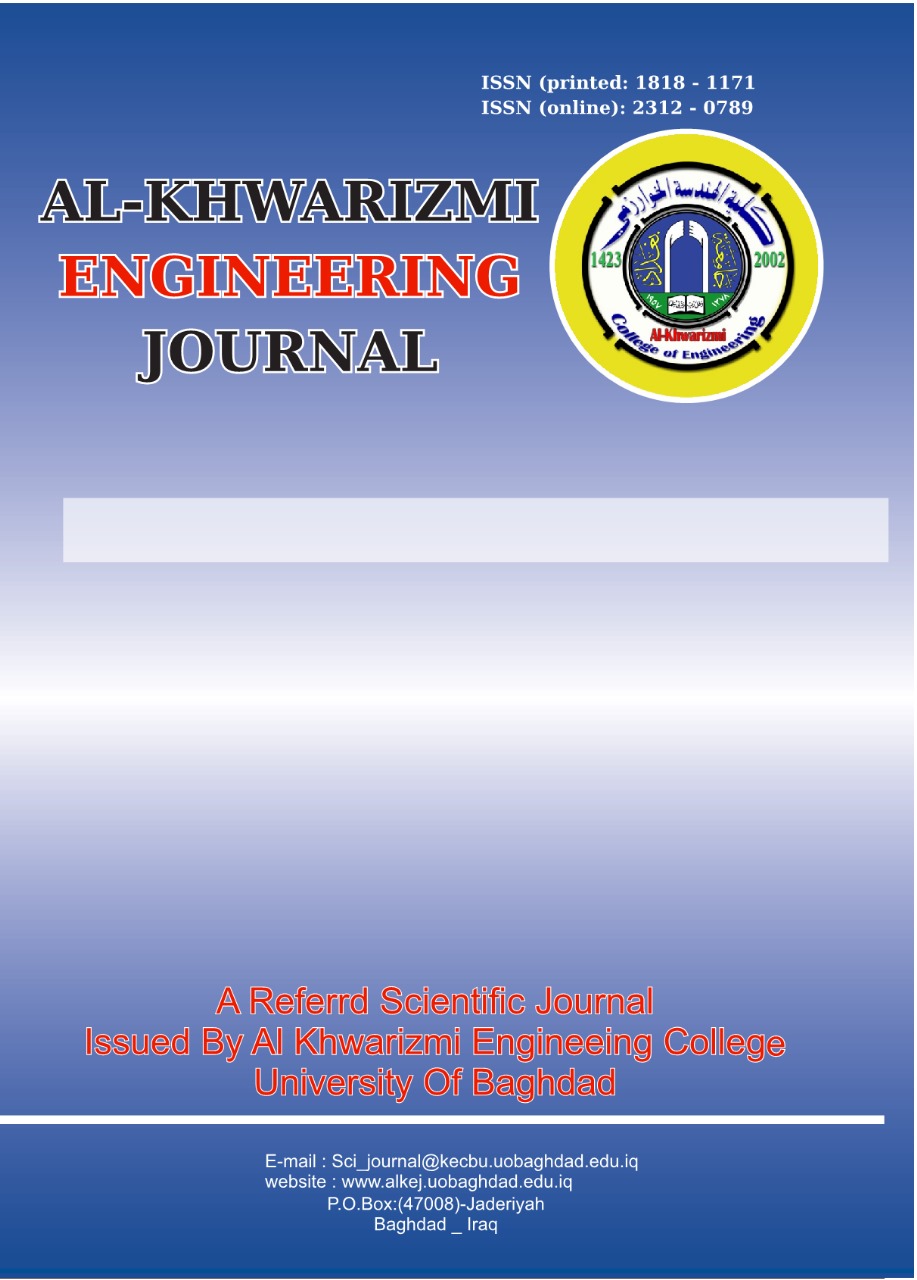Abstract
The purpose of this study is designate quenching and tempering heat treatment by using Taguchi technique to determine optimal factors of heat treatment (austenitizing temperature, percentage of nanoparticles, type of base media, nanoparticles type and soaking time) for increasing hardness, wear rate and impact energy properties of 420 martensitic stainless steel. An (L18) orthogonal array was chosen for the design of experiment. The optimum process parameters were determined by using signal-to-noise ratio (larger is better) criterion for hardness and impact energy while (Smaller is better) criterion was for the wear rate. The importance levels of process parameters that effect on hardness, wear rate and impact energy properties were obtained by using analysis of variance which applied with the help of (Minitab18) software. The variables of quenching heat treatment were austenitizing temperature (985 C˚,1060 C˚),a soaking times (50,70 and 90 minutes) respectively, Percentage of volumetric fractions of nanoparticles with three different levels(0.01, 0.03 and 0.08 %) were prepared by dispersing nanoparticles that are (α-Al2O3,TiO2 and CuO) with base fluids (De-ionized water, salt solution and engine oil).The specimens were tempered at 700°C after quenching of nanofluids for (2 hours).The results for ( S/N) ratios showed the order of the factors in terms of the proportion of their effect on hardness, and wear rate properties as follow: Austenitizing temperature ( 1060 C˚),Type of base media (salt solution), Nanoparticles type (CuO), Percentage of nanoparticles (0.08%) and Soaking time(90min) was the least influence while for the impact energy were as follows: Type of base media (oil), Austenitizing temperature (985C˚), Percentage of nanoparticles (0.01%), Nanoparticles type (α-Al2O3) and last soaking time (50min).
Keywords
Hardness
Impact energy
Nanofluids
quenching
Taguchi technique.
wear
Abstract
الغرض من هذه الدراسة هو تصميم معاملة حرارية (اخماد ومراجعة) بوساطة استخدام تقنية تاغوتشي لتحديد العوامل المثلى للمعاملة الحرارية (درجة حرارة الاوستنايت النسبة المئوية للجسيمات النانوية و نوع وسط الأساسو نوع الجسيمات النانوية ووقت النقع) لزيادة الخواص (الصلادة,معدل البلى وطاقة الصدمة) لفولاذ مقاوم الصدأ المارتنسايتي 420. تم اختيار مصفوفة متعامدة(18L) لتصميم التجربة. عوامل العملية المثلى حددت باستخدام معيار (Signal/Noise) (الأكبر هو الأفضل) للصلادة وطاقة الصدمة بينما معيار (الأصغر هو الأفضل) كان لمعدل البلى. تم الحصول على مستويات الأهمية لعوامل العملية على خواص الصلادة,معدل البلى وطاقة الصدمة باستخدام تحليل التباين المطبق بمساعدة برنامج (منتاب18).المتغيرات للمعاملة الحرارية (اخماد) كانت درجة حرارة الأوستنايت (985 C˚، 1060C˚) ، وأوقات النقع (50،70 ، 90 دقيقة) على التوالي، النسبة المئوية للكسور الحجمية للجسيمات النانوية بثلاثة مستويات مختلفة (0،01،0.03و0.08%) تم تحضيرها من خلال تشتيت جسيمات نانوية التي هي (α-Al2O3،TiO2،CuO) بأوساط أساسية (الماء غير المتأين، محلول الملح، زيت المحرك).تم مراجعة العينات بدرجة (700(C˚ لساعتين بعد الاخماد بالموائع النانوية .أظهرت النتائج لنسب ( S/N) ترتيب العوامل من حيث نسبة تأثيرها على الخواص الصلادة ومعدل البلى على وفق النحو الاتي : درجة حرارة الاوستنايت (1060 C˚ ,(نوع وسط الاساس(محلول ملحي), نوع الجسيمات النانوية (CuO), وقت النقع(90 دقيقة) واخيرا النسبة المئوية للجسيمات النانوية (0.08%) بينما لطاقة الصدمة كانت على وفق النحو الاتي: نوع وسط الاساس(زيت المحرك), درجة حرارة الاوستنايت (985(C˚، نوع الجسيمات النانوية (α-Al2O3)، النسبة المئوية للجسيمات النانوية (01.0%) واخيرا وقت النقع (50 دقيقة).
